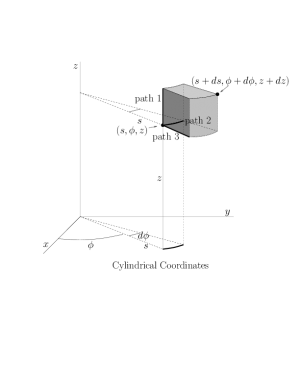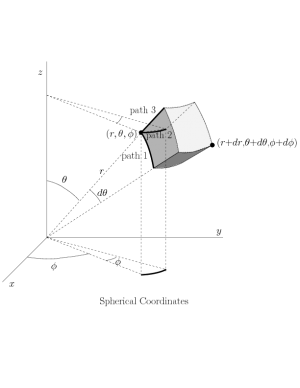Triple Integrals in Cylindrical and Spherical Coordinates
Evaluating multiple integrals in other coordinate systems involves the same idea as in rectangular coordiantes: chop and add. The difference is in the way one chops.
In cylindrical coordinates, one chops a region into small pieces that look like “pineapple chunks”, with volume given by \begin{equation} dV = r\,dr\,d\phi\,dz \end{equation} This construction is illustrated in the first figure below (which can also be used for polar coordinates if one ignores the vertical path).
Spherical coordinates can be handled similarly, where the small pieces now look like parts of orange segments. The radial side still has length $dr$, and the other two sides can be thought of as (parts of) lines of longitude and latitude. Segments along lines of longitude (“vertical”) have length $r\,d\theta$, but segments along lines of latitude (“horizontal”) have length $r\sin\theta\,d\phi$ — the radius of the circle depends on the latitude, hence the extra factor, which turns out to be $\sin\theta$. Thus, in spherical coordinates we have \begin{equation} dV = r^2\sin\theta\,dr\,d\theta\,d\phi \end{equation} This construction is illustrated in the second figure below.

